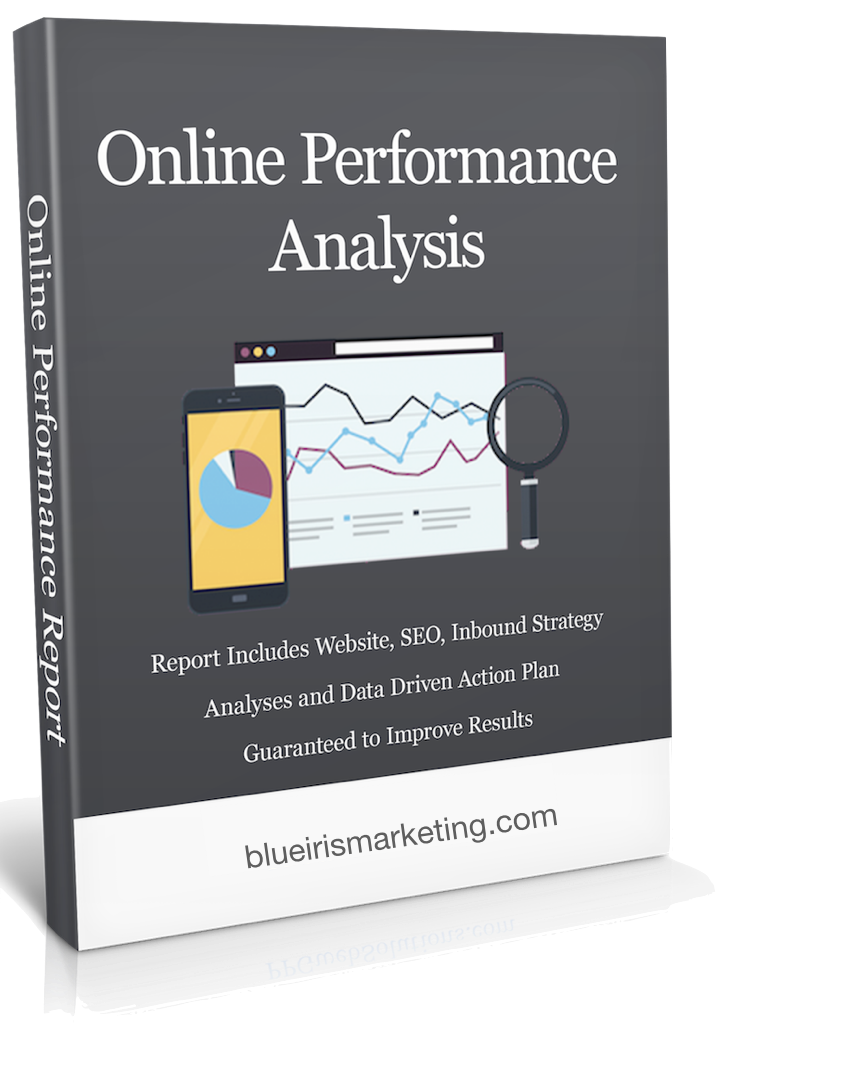7 Tips to Increase Page Rankings and Readership

How to Increase Traffic, Leads, and Conversions
June 26, 2017
On-Page SEO – The Perfectly Optimized Page
August 3, 2017Every day you receive another tip for increasing rankings and readership in your email box.
Why is that? Can they possibly all have merit? Will it work? Is it worth your time?
The answer is, “Maybe.”
SEO is a moving science. SEO experts must be as connected and tuned in to search engine updates and fluxes as the surfer is to the board and the board is to the water.
They are one.
SEO experts must be one with the subtle and not so subtle algorithmic updates and shifts that occur daily. What worked last year, doesn’t work in the same way this year.
We recently wrote a post that explained why it is critical to understanding how the SEO tactics you use today could ruin your online business in the future. While fluctuations and changes happen every day, future-proofing your SEO is real and it is really necessary.
It is very difficult for a lay-person to know exactly what on-page and off-page SEO tactics will work best for them – in their market, in their locale, for their business. However, there are some pretty basic on-page SEO tactics you must incorporate if you want to increase your search engine rankings and readership.
Website Design, Architecture and User Experience Implied
As you know, it is always implied that your website design, architecture, and user-experience meets or exceeds Google’s best practices as spelled out in Google WebMasters site. Additionally implied is that your on-site technical SEO meets or exceeds Google’s best practice and recommendations. You can run a test here.
Hubspot’s website grader tool also offers a high-level perspective of how your website is performing. It’s really easy and quick to run this test.
So, how do you know whether to employ a “must do” tip?
You could Google it and see what others are saying. If the source of the information is highly regarded and you find evidence that indicates this is a good practice, you should do it.
Warning! Be sure that any practice you integrate into your on- or off-page SEO strategy is a White Hat strategy. Black Hat strategies and practices will flat out kill your brand integrity and could get your site shut down. I’m not being over-zealous or exaggerative here. This is fact.
SEOs are constantly improving their strategies to increase your rankings, clickthroughs, targeted traffic and increased leads.
Here are 7 tips that will increase your rankings and readership.
Tip One
Headlines. Studies have shown for a very long time that people love and respond to lists. A recent study that analyzed one million headlines revealed that list posts are shared more frequently than any other post.
Garrett Moon, Founder of CoSchedule, conducted a study of posts that had been shared at least 100 times.
His study revealed that 89% of English-only posts are shared less than 100 times.
Only ten percent of English-only posts were shared more than 100 times and 1% of English-only posts were shared more than 10,000 times.
If 89% of all English posts are shared less than 100 times, it is critical to understand what the top 11% of posts being shared more than 100 times are doing to earn those shares.
Garrett posted this chart of the “most popular words/phrases in highly-shared headlines.”
He also shares that list posts do best on Facebook, Twitter and Linkedin.
Video is the most popular form of media on Facebook.
Customize your headlines for your audience on each platform on which you post. Always, post for the buyer persona you are targeting on that platform. If you are targeting multiple buyer personas, personalize the headline and the post for each persona. We’ve written exhaustively on this subject.
Here are some subject matter how-to guides and complimentary templates and workbooks:
- Create a Detailed Buyer Persona [and a FREE TEMPLATE]
- Buyer Personas: How to Improve Your Campaigns
- Using Buyer Personas to Create Successful Inbound Marketing Campaigns
To our surprise, the most shares are to Pinterest! In fact, 90 percent of shares occur on Pinterest. This doesn’t work for all content. You must have the right content and audience to take advantage of this opportunity.
The remaining 10% of shares is spread across the other social platforms like this:
- Facebook – 6%
- Google+ – 2%
- Twitter – 2%
- LinkedIn – too low to measure
When we take Pinterest out of the factor, distribution share across social channels looks like this:
- Facebook – 61%
- Google+ – 17%
- Twitter – 19%
- LinkedIn – 3%
One last bit of helpful information in creating a great headline – it is possible to determine the emotional value of your headline.
The folks at Advanced Marketing Institute created a fabulous tool that is free to use: Emotional Marketing Value Headline Analyzer (EMV).
It appears that the headlines with the highest shares, scored several points higher using the EMV than those with less shares.
The higher the headline’s emotional score, the more shares you can expect with your post.
We can sum tip number one up like this:
- Your headline will make or break your search engine rankings and number of readings
- List headlines outperform all other headline types
- Writing specifically to the buyer persona you are targeting on each social channel and content platform is vitally important to rankings, readership and volume of shares
- Headlines with a high emotional value outperform those with lower scores
Tip Two
Doorway Pages. Google refers to Doorway pages as pages that have thin content and are for the sole purpose of ranking in local searches.
This is a big fat “DON’T DO IT” tip.
This isn’t new information. Google rolled out a penalty for this in 2015.
You’ve got doorway pages if you have several pages that:
- Are basically the same, with the exception of a different city or address
- Aren’t included in your menu(s)
- Your primary intention is to rank highly for a specific search query and/or local traffic
Why is this a bad practice?
Primarily, because Google said.
They are bad for searchers in that the search results display multiple pages that are not “final destination pages,” which means they are not the direct page containing the results the searcher was looking for.
Another type of doorway pages: pages or multiple domains used to funnel traffic to one page.
Greg Gifford at SearchEngineLand sums it up like this:
If you’re a car dealer, and you’ve got 25 pages on your site about the 2017 Ford F-150, with each one targeting a different city, then you’re probably in bad shape. It’s likely that none of the pages are on your main menu, or even within one click of a main menu page. The pages probably all have the same photo of a truck and only a few sentences about how you sell that truck in that particular city.
Do these pages provide any value at all for an actual human? Absolutely not.
Don’t get caught up in the thought that Local SEO is only related to content. A good off-site SEO strategy includes practices that promote your various locations. Greg wrote an article called, “Local Content Silos: The Secret to Local Search Success.” It’s worth the read!
Tip Three
Anchor Text. Be sure your links include anchor text. While it sounds obvious, you would be surprised how many times people include links and forget or fail to include the anchor text. The link is visible to search engines, but not to the visitor.
This little error can earn you a google penalty. Google considers this “cloaking.”
Whether you did it intentionally or not doesn’t matter. You risk getting penalized for it whether it was a mistake or an oversight.
Google is no different than the law. I recall when I was a teenager and I was learning to drive. My dad said, “do that again and you’ll likely get a ticket.” I was like, “do what?”
He told me what I did and that it was against the law. I said, “Well, I didn’t know it was against the law.” He told me that the “law” doesn’t care whether you know it or not. It is your responsibility to know the law.
Not knowing the rules won’t save you from the consequences.
This is why working with a White Hat SEO expert is critical to your success.
Tip Four
Bold Text and Strong Tags. I cannot stand to read content that has abused bolding, caps and italics. Neither can you. That’s why Google has an algorithm that detects abuse of these text treatments.
All of Google’s guidelines and algorithms are developed around one principle: Serve the user what they are looking for at the top of the rankings, make sure the user experience is supreme – meaning the user can easily and quickly read, digest and navigate intuitively.
So, if your text treatments are distractive and are trying to game the system, you are going to get penalized. There are many examples of web pages whose rankings dropped like lead in the search engines because they abused the strong and italics tags.
When your text treatment is structured to increase the user’s experience, you’ll be rewarded. When it is used to influence rankings, you’ll be consequence.
SEOPressor conducted an experiment to prove the case that stuffing the <strong> tab will harm your rankings.

Tip Five
Backlinks. This is certainly not a new topic. I think for website owners, it may be a mysterious subject.
What is a backlink? It is a hyperlink from another website to your site.
The more the better… almost.
Not all backlinks are created equally.
There are toxic backlinks and backlinks that add no value whatsoever.
Remember Google’s mission. It’s all about the user or visitor.
Backlinks are valued based on a link’s individual quality score. Therefore, the quality of the website and the web page that is linking to your website is the driving factor of value.
Link quality is the key.
Low-quality backlinks will cost you your rankings. This particular tip is difficult for a website owner to effect or measure on their own.
If you want to know if you have poor or spammy backlinks, request a free report here.
There are a lot of no no’s in a backlink strategy. We won’t get into those here though.
In 2017, a website with toxic, spammy, low-quality backlinks is going to suffer in the search engines. It will harm the brand and domain’s trust, the domain and the page score – not to mention their page ranking.
Quality backlinks are a top Google Algorithm. You’ll only get high-quality backlinks when you have high-quality content and a website that is positioned for success and that follows Google’s WebMaster guidelines.
When your site is linked to spammy, low-quality websites, you’ll lose Google’s trust. How do you know you’ve lost their trust? Check your page rankings… there really is no guessing on this one.
Tip Six
Backlinks from penalized sites. This is similar to the previous tip, but deserves its own section because it is important.
We all know people who find an SEO company for next to nothing. They brag about how they achieved first place rankings and soared in the search engines quickly. That’s the first potential warning flag that the SEO could be using non-White Hat SEO strategies to boost fast results.
Nearly every time I’ve heard this story, analysis of the website and their SEO efforts reveal black hat tactics were involved.
Black Hat Tactics
Website owners don’t know what black hat tactics are. They don’t know the different in black hat and white hat.
Another thing my dad taught me… “If it sounds too good to be true, it probably is.” Oh, while I’m at it, one more… “You get what you pay for.”
Here’s the thing, SEO is a mystery to so many. How do you know your SEO guy is performing legal tactics on your website? How do you know that the practices taken today won’t cost you big time next year?
You don’t.
Same way I don’t know if my mechanic did something to cause me to have to come back to him again next month.
I can say with a significantly high degree of certainty that that isn’t going to happen with my mechanic.
How can I say that? Because he’s built a trusting relationship with me.
He came highly referred from people for whom I have a high degree of trust. The trust I have with my friends has a great deal of value and it has earned a great deal of respect from me.
They earned it through the way they conduct their lives and the successful decisions they continually make.
Because their decisions have yielded them a life and lifestyle that I equate with success, I trust the people they trust.
My mechanic inherits some of the trust that exists between me and my friends and he and them.
Is he the cheapest guy in town? No way. I wish.
Does he carry certifications and does he belong to relevant industry organizations? You bet!
Why is that important? Because first, he’s worked hard to get those certifications. He doesn’t want to do something stupid to lose them. Second, if he does something underhanded he’ll be reported to both the certifying organizations and then to the associations he has aligned himself with. Those associations give him credibility.
If that is lost, he loses his competitive edge. He loses the inherited trust that comes from all of these parties. He also loses their referrals. The quantified value of these things is significant.
Same thing with your SEO partner.
Because you don’t know whether or not your SEO uses white hat or black hat or does or doesn’t do other underhanded tactics to earn you quick rankings, you’re not going to know if Google is getting ready to penalize you or shut your shop down.
You must hire an SEO expert with a strong track record of long-term success on behalf of their clients.
Your SEO can make you or break you.
A low-cost SEO company is going to cost you more in the long term than one that charges a competitive rate and delivers via best practice guidelines sustainable and increasingly favorable results.
Today, search engines are the replacement of the 1980s Yellow Pages. If you aren’t ranking on page one, you are losing the race. Your customers cannot and will not find you.
SEO is not for lay people.
Want to know if your SEO is up to par? Get a free SEO report card.
Tip Seven
Content. It all starts with content. It is the number one Google Ranking Factor. There are several elements Google is looking for when it comes to your content.
The top three are:
- Keywords. Your headline is the strongest relevance signal to Google. You need to use keywords in the title tag and the body of the content. Be sure to wrap your headings with <H1> tags.
- Content Length. Size matters. For Google, quality is key and so is length. They have a combined and direct correlation to your page rankings. Studies reveal that pages that rank number one over the past year have an average of 1,890 words. If you want to find out what the average word count is in your industry, search the terms your buyer persona is using to find your solution. Look at the search engine results and analyze the content and the word count.
More On-page SEO Tips
We’ve written a lot of articles and how-to guides to increase the quality of your pages so that you can out-rank your competition.
Here are a few worth reading:
- How to Increase Traffic, Leads, and Conversions
- 2017 SEO Ranking Factors Updated
- SEO: What is important
- How to Map Keywords to Buyers Search
SEO is a very important aspect of your overall business’s success.
You can choose to ignore it and say, I don’t believe in it or I don’t have a budget for it… but, you must figure out a way to hire a qualified SEO expert.
More than 90% of purchases started with online research. If your website isn’t on the first page, you weren’t part of their research.
If you weren’t part of the research, you’re likely not going to be included in their vendor or solution selection.
Our world is changing. So must the way we go about getting customers.
If I can help you in any way, please don’t hesitate to reach out to me.
Get Your FREE Website and SEO Analysis Today
Using data-driven analyses and research, we will conduct a thorough performance audit of your:
- Brand Performance
- Inbound Marketing Strategy
- Search Engine Optimization
- Competition
- Website
- Social Signals
- Domain Ranking and Rating











